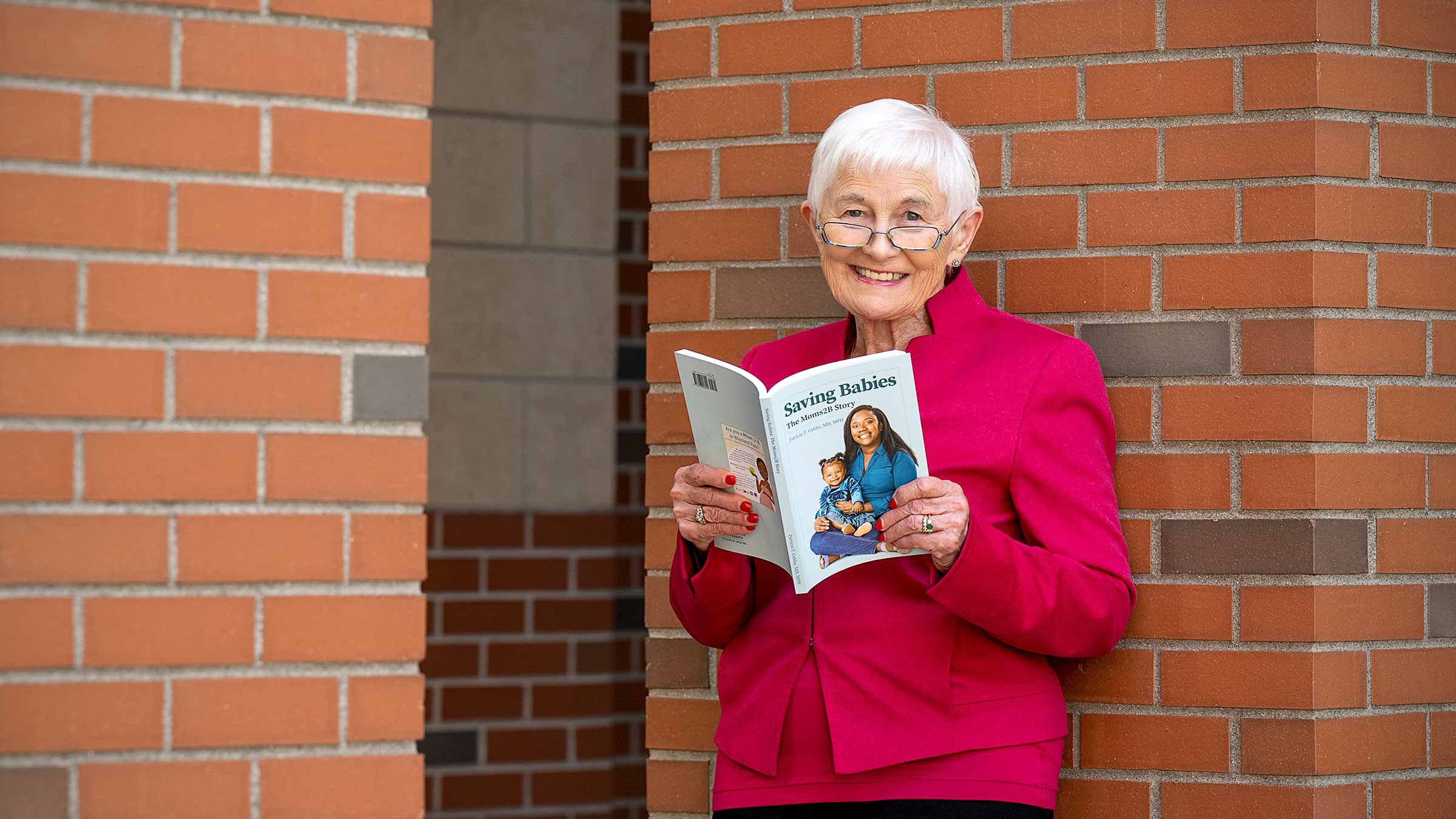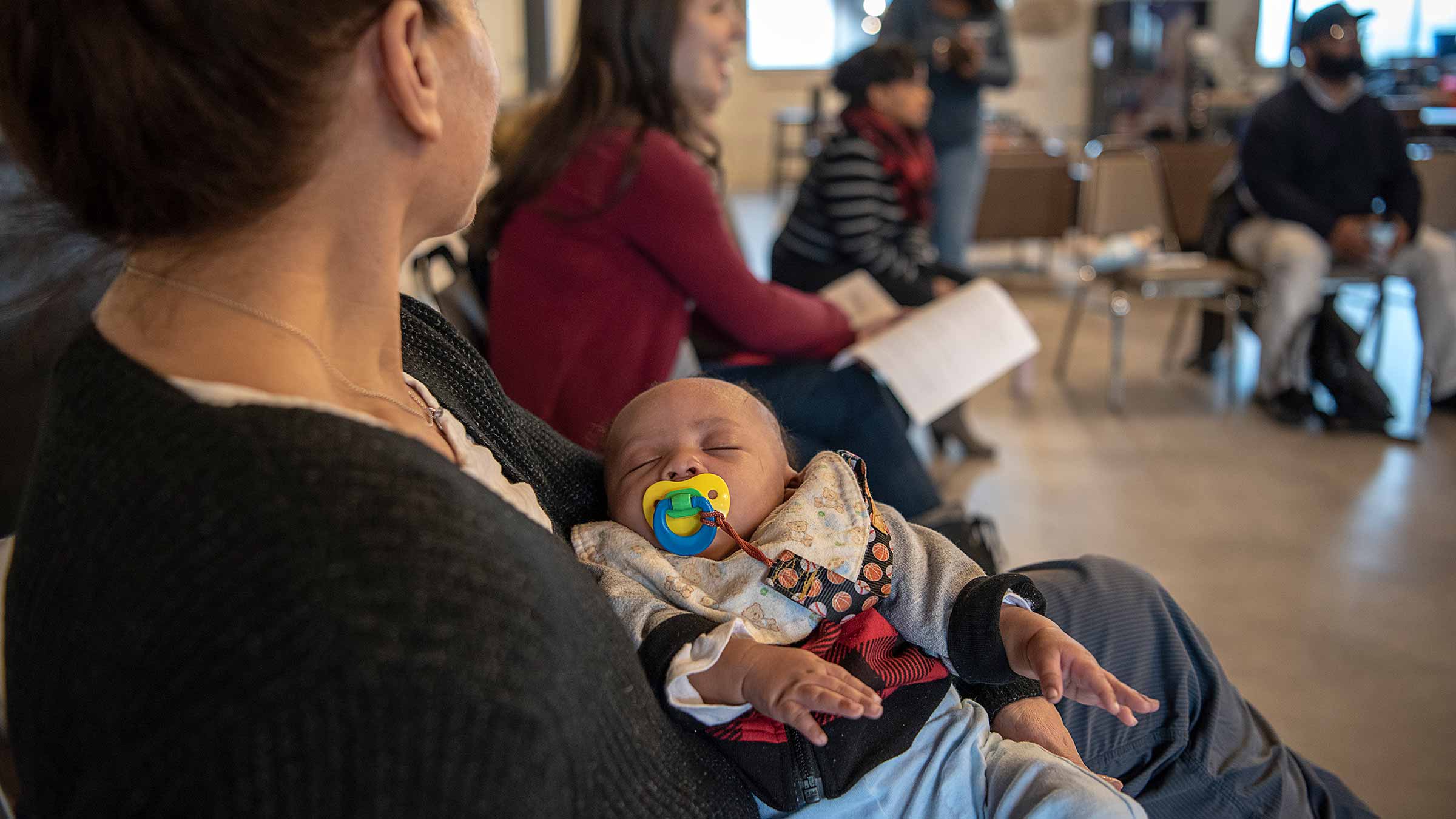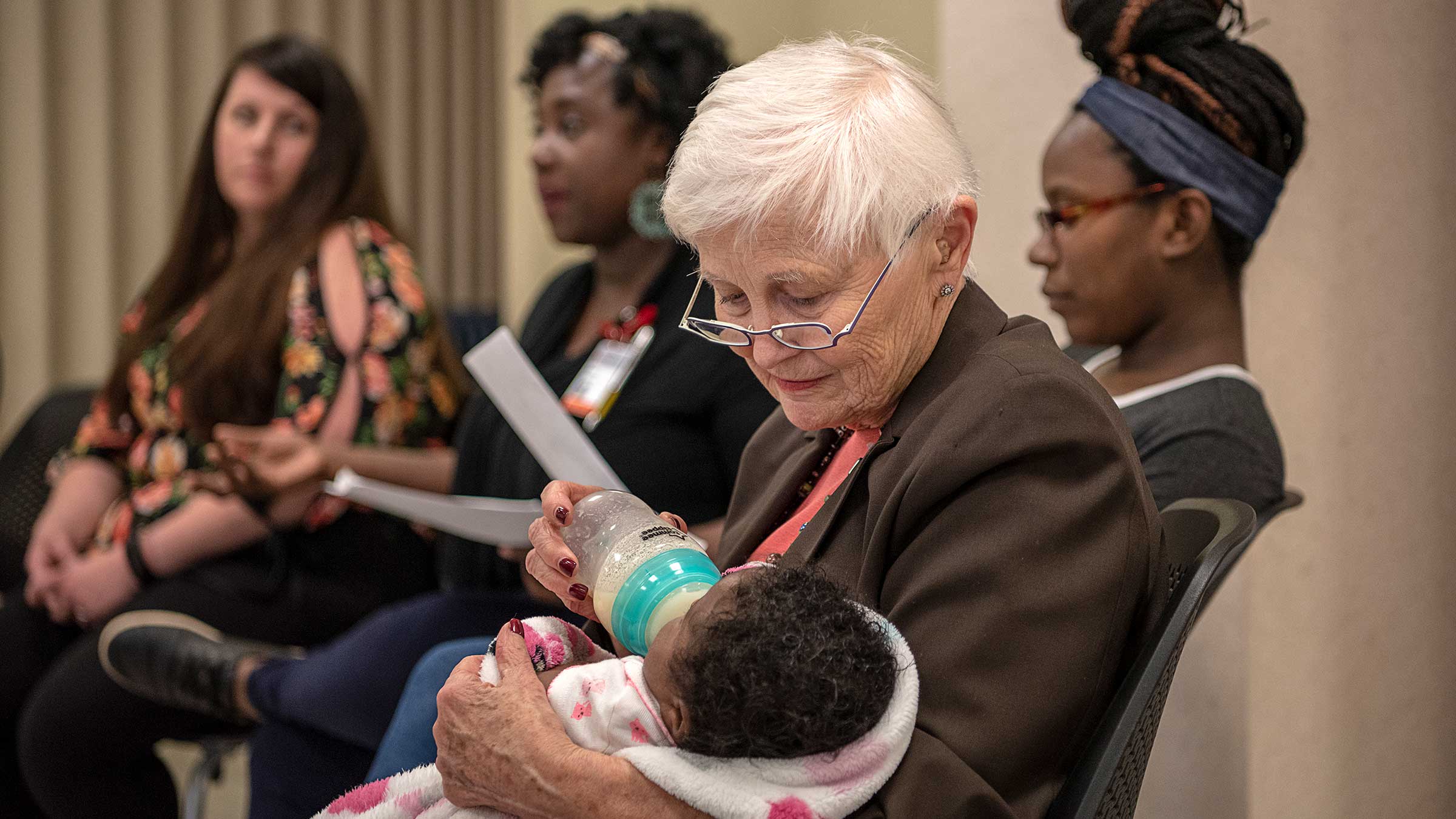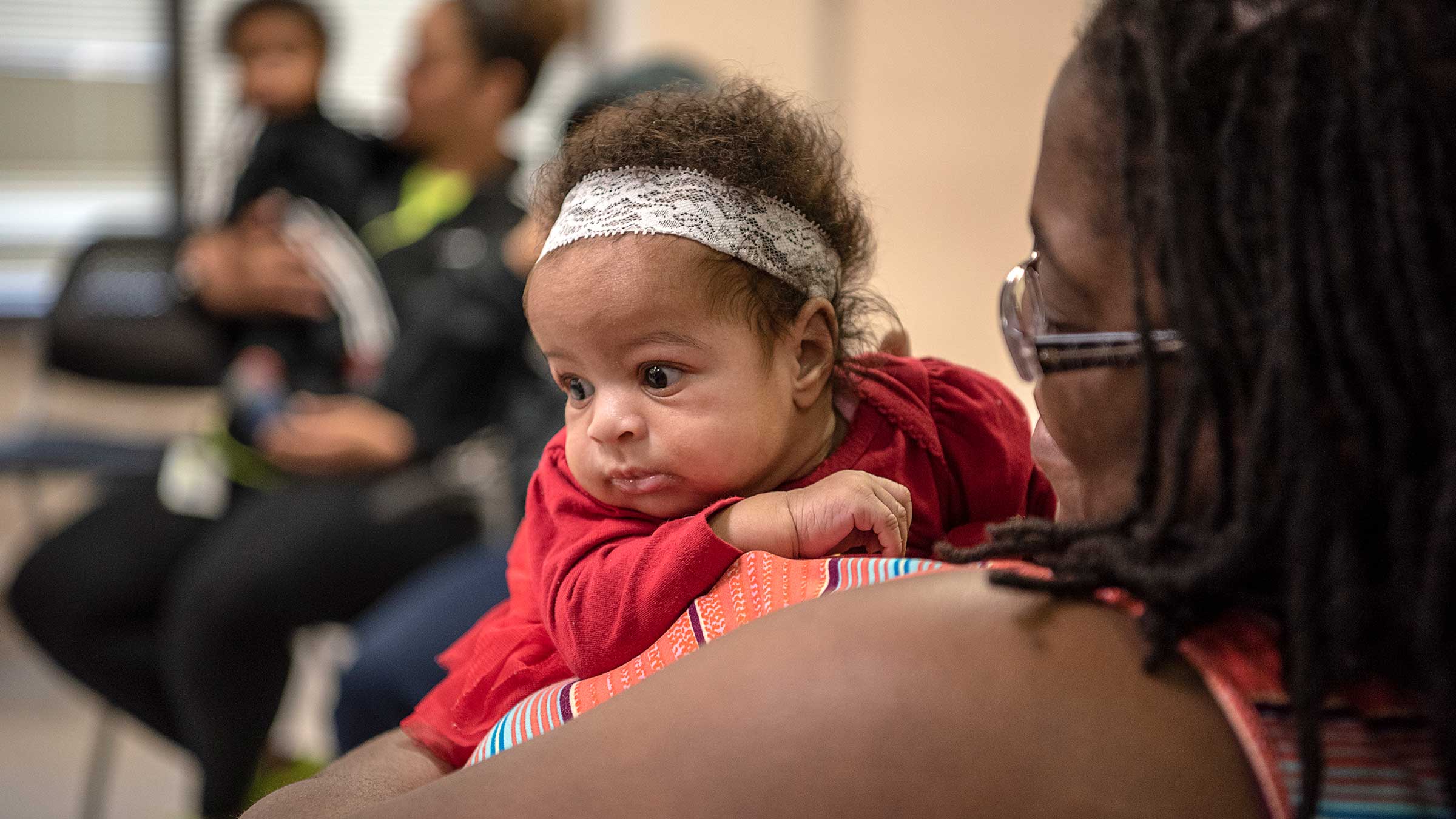‘Saving Babies: The Moms2B Story’ highlights efforts to fight infant mortality in Ohio
Lessons learned in infant mortality are designed to be modeled in communities around the country
“I returned to Ohio in 2008 shocked to find persistently high rates of Black infant deaths,” begins Patricia Gabbe, MD, in the introduction of her new book, Saving Babies: The Moms2B Story, as she recounts why she started the program in 2010 to create evidence-based models to combat infant mortality in Columbus — in particular, for the high disparity of infant deaths in the Black community.
The idea for Moms2B came after Dr. Gabbe, a clinical professor of Pediatrics at The Ohio State University College of Medicine, spent a year on then-Ohio Governor Ted Strickland’s infant mortality task force. She realized that she had the tools and the passion to take action based on task force findings. To save babies in Black communities, Dr. Gabbe founded Moms2B as a community-based pregnancy program for low-income parents-to-be, in partnership with The Ohio State University.

Moms2B evolves to meet the needs of high-risk communities
At the beginning of the Moms2B journey, Dr. Gabbe and team approached their work as research for how nutrition and stress reduction affect infant mortality rates.
However, the team quickly learned that they weren’t conducting research; they were developing a program to meet the needs of individuals in these high-risk communities.
The Moms2B team also learned early on that they hadn’t been aware of all the factors contributing to severe stress and depression during pregnancy and postpartum, such as a lack of housing, unsafe and violent neighborhoods and the cost of living.
“Our research protocol did not consider the real-world stories we heard. Some women came late in pregnancy, some came early and from different neighborhoods. Some had no food, no housing, no transportation, no support during labor and delivery; we needed a flexible program to meet the variety of needs,” Dr. Gabbe says.
After getting to know the first few participants in the Moms2B program, Dr. Gabbe and her colleagues adjusted their approach to meet these parents’ needs with a community approach to the pregnancy journey and cross-discipline help from doctors, nurses, dietitians, lactation specialists, social workers and child development specialists.
A model for fighting Black infant mortality
Today, participants join weekly meetings in person or over Zoom at any stage of their pregnancy and continue to attend up to a year postpartum. Those who attend in person enjoy a meal together and leave with diapers, food and a Kroger gift card. During the meetings, participants learn about the cornerstones of prenatal and infant health while also building a support system together. This support system is essential, Dr. Gabbe says, for Black women who are at a higher risk for preterm birth and infant loss due to stress, anxiety, depression and pregnancy-related health concerns.

To stay ahead of these health concerns, the multidisciplinary staff developed a tailored curriculum taught by each discipline’s experts: child development professionals, social workers, patient navigators and nurses with labor and delivery experience. The nurses use electronic health records through Ohio State to monitor prenatal health. After prenatal appointments, registered nurses review results with participants in the program to help them understand their specific health needs and empower them with knowledge to maintain a healthy pregnancy. This model has been successfully replicated across different neighborhoods in Columbus and beyond.
“Every mom deserves this program,” Dr. Gabbe says, noting that she designed the program to be replicated in other communities between their own neighborhoods and medical institutions.
Expanding the Moms2B program
Moms2B started in Columbus’ Weinland Park neighborhood and expanded to five neighborhoods throughout the city. As the program became established in new neighborhoods that weren’t as walkable, transportation became one of the main challenges for getting parents involved in the program. So, Dr. Gabbe and team put their heads together to uncover resources to solve these challenges that exist in many communities, including Medicaid-based services that provide transportation to medical visits, prescription pick-ups and food pantries.

In 2021, Dr. Gabbe applied and was accepted as a George W. Paulson, MD, Scholar-in-Residence at The Ohio State University’s Health Sciences Library Medical Heritage Center. Through this program, she received research support to study the history of infant mortality in Black and white communities not just in Columbus, but throughout Ohio.
Her residency – and her long history with Moms2B – became the foundation for her book Saving Babies. She hopes the book can encourage more communities to adopt the program.
In 2021, the first branch of the program was established in Dayton. Due to COVID-19, in-person sessions were delayed and Dayton Moms2B started by offering virtual meetings, which ended up making it easier for those in the hospital with medical complications and those with newborns to attend. By 2022, 36 participants were enrolled in Dayton.

As the Moms2B program grew, it was clear that the women’s partners, who are essential for the mom’s and baby’s health, could benefit from education and support as well. The Dads2B program was developed through the Urban Family Development Center to address this need. The program is allied with Moms2B, and partners in Dads2B are invited to join the weekly teaching lessons to understand what is needed for a healthy pregnancy.
Saving Babies: The Moms2B Story can be ordered here or by requesting a copy through this form.

Every baby deserves a healthy start
Learn how to join or volunteer for Moms2B.
Learn more



